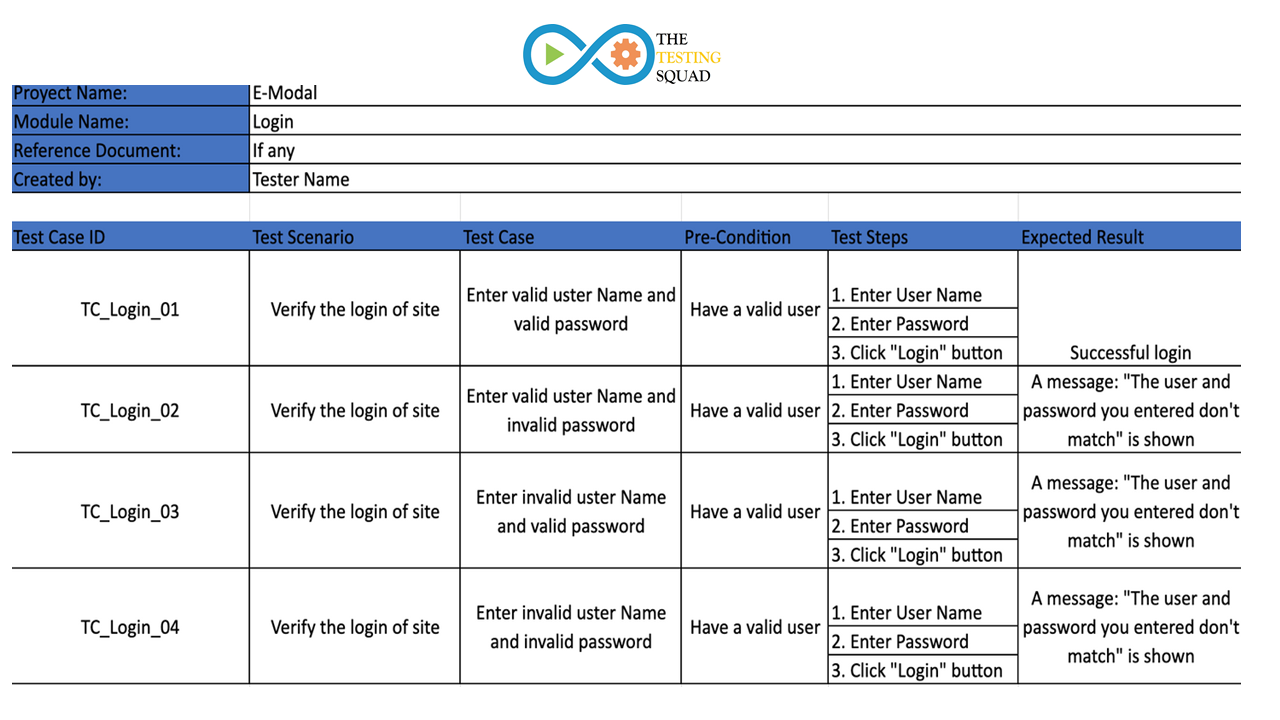Introduction:
In the world of Software testing, test cases play an important role in ensuring the quality and reliability of software products. Understanding the key concepts and principles behind test cases is essential for every software tester.
To further streamline your software testing process, try our TestGen - Interactive Test Case Generator. This powerful tool helps you easily create, manage, and optimize your test cases, allowing you to enhance test coverage and improve efficiency in your quality assurance process.
What are Test Cases in Software Testing?
- A Test case is a set of instructions and conditions used to verify the functionality and behavior of the software.
- Test cases provide guidance for testers to execute tests consistently and document test activities clearly.
- They outline the steps, inputs, and expected results.
- By executing test cases, defects can be identified, software functionality can be validated, and reliable software products can be delivered to end-users.
The Core Concepts Behind Writing Effective Test Cases
To write effective test cases, it’s essential to understand a few key concepts that ensure coverage and thorough testing.
1. Test Case Design Techniques
Effective test case writing starts with test case design techniques. These methods ensure that the test cases you create are comprehensive, efficient, and cover a wide range of scenarios.
- Equivalence Partitioning: This technique divides input data into different partitions, where each partition should behave the same. For example, testing a login feature with both valid and invalid usernames and passwords to ensure all valid and invalid scenarios are covered.
- Boundary Value Analysis (BVA): In real-life applications, errors often occur at the boundaries of input values. For instance, testing a form that accepts a range of ages (e.g., 18-100) should include boundary tests like entering 17 and 101 to ensure the system handles these edge cases properly.
b) Test Coverage:
- Statement Coverage: Ensures every line of code is tested. In real-world applications, this is crucial to verify that all parts of your program are executed, especially when working on complex logic like user authentication, payment gateways, etc.
- Branch Coverage: Ensures that all possible branches (if-else statements) are tested. This coverage type is vital for identifying logical errors that could cause unexpected behaviors during runtime.
Test Case Documentation and Management
Proper documentation and management of test cases are important for efficient testing. This section highlights best practices:
A good test case template should include:
- Test Case ID: A unique identifier.
- Test Case Description: A brief but clear description of what the test will do.
- Test Steps: Step-by-step instructions on how to execute the test.
- Test Data: Data required to perform the test.
- Expected Results: What you expect to happen when the test is executed.
- Actual Results: The outcome after running the test.
- Pass/Fail Status: Whether the test passed or failed based on the actual results.
2. Test Case Versioning and Maintenance
As software evolves, so should the test cases. Regularly review and update your test cases to ensure they remain relevant. Implement version control for test cases, similar to how developers manage source code, so you can track changes over time.
Let’s look at an example test case from a real-life software project, say, a login feature for a mobile app:
Test Case ID: TC001
Test Case Description: Verify login functionality with valid user credentials.
Test Steps:
Open the mobile app.
Navigate to the login screen.
Enter valid username and password.
Tap on the login button.
Test Data:
Username: user@example.com
Password: validpassword123
Expected Result: User is redirected to the home page after successful login.
Actual Result: (to be filled after test execution)
Pass/Fail Status: (to be filled after test execution)
Click on the below Image to view:
Example Test Case Template (what is a test case in software testing?):
In Software testing, A test case is a specific set of conditions, inputs, actions, and expected results designed to verify the functionality and behavior of a software system or a specific feature. It is a detailed description of a test, outlining the steps to be performed, the inputs to be provided, and the results expected to be observed.
A Test case generally Contains the following parts:
- Test Case ID: A unique identifier number for the test case.
- Test Case Description (Test Scenario): A clear and concise description of what the test case aims to achieve.
- Test Steps: Step-by-step instructions must be followed to execute the test.
- Test Data: The input data or conditions required to execute the test.
- Expected Result: The expected result or behavior that should be observed if the test is performed correctly.
- Actual Result: The result or behavior observed during test execution.
- Pass/Fail Status: Indicates whether the test case passed or failed based on actual results.


Post a Comment